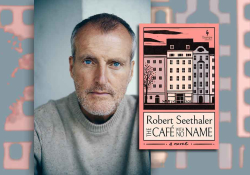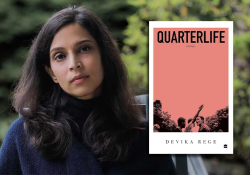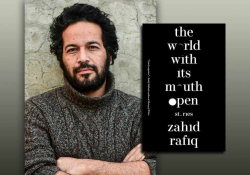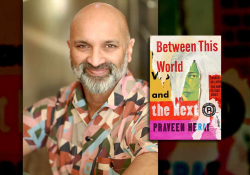Solved by Walking: A Conversation with Writer-Flâneuse Kathleen Rooney
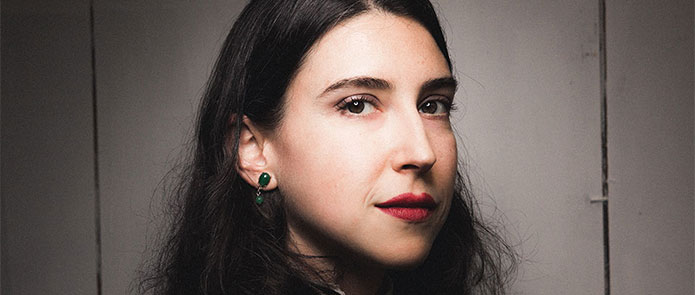 photo: joe mazza
photo: joe mazzaKathleen Rooney is the author of eight books of poetry, nonfiction, and fiction, including the novel O, Democracy! and the novel in poems Robinson Alone. With Eric Plattner, she is the co-editor of René Magritte: Selected Writings. In her clever 2017 novel Lillian Boxfish Takes a Walk, a Manhattan flâneuse recalls her life and career—she was the highest-paid female ad copywriter of the 1930s—while walking ten miles on New Year’s Eve, 1984. Here she discusses the novel, walking the urban landscape, what draws her to Magritte, and hybrid literary genres.
Michelle Johnson: This past weekend I read your most recent novel, Lillian Boxfish Takes a Walk. I particularly appreciated the crisp, sometimes-aphoristic style, which seems perfectly suited to the copywriter-poet character. Did you tailor your style here at all with Lillian in mind?
Kathleen Rooney: Thank you so much for reading the book, and for saying that, and for asking that question. Yes! I did tailor the style to reflect Lillian’s ad-woman/light-verse poet background. To be good at the kind of observational, comic, and rhyming advertising and poetry that she—and the real-life poet/copywriter Margaret Fishback, upon whom she’s based—excelled at, you have to please your audience by a kind of tension of opposites: you have to balance strictness with liveliness. And you have to exhibit precision and focus on common topics in crisp language. So I tried to give Lillian’s voice as a first-person narrator those qualities.
In addition to keeping Margaret Fishback’s approach in my head as a model, I also tried to channel the brilliant and bracing voice of Jane Jacobs in her classic book on urban planning, The Death and Life of Great American Cities. Obviously, her content—the admiring and incisive analysis of what makes for a thriving neighborhood, what makes streets safe or unsafe, the problems of poverty and the perils of gentrification, and so forth—is relevant to Lillian’s attitude toward her beloved New York City. But Jacobs’s syntax and diction, her compassionate but critical tone, and her vivid turns of phrase were also instructive in the creation of Lillian’s character.
Johnson: I also greatly appreciated your ability to represent an older woman’s experience. Not only was she reflecting back on earlier times but also continually having to adjust to others responding to her based on her age. In addition to writing a flâneuse into the canon, you seemed to be writing against ageism. Am I reading too much in?
Since childhood, the first thing I’ve always done whenever I’ve arrived in a new place is to map it with my feet.
Rooney: You’re not reading too much in at all. I wanted to add to the relatively short (but growing) tradition of the female urban walker in literature, but also to offer an octogenarian character who is as complex and sharp and curious at eighty-five as she was at twenty-six.
Because of the book’s split structure, you get to see Lillian at a variety of ages, and part of why I wanted to do that was to show the continuity and consistency of her personality over the course of multiple decades. When she is old and looking back at the events of her past, as well as what Manhattan is like in 1984, Lillian says, “The point of living in the world is just to stay interested.” I wanted very much to show her as someone who has stayed both interested and interesting.
Johnson: “A motto favored by the ancients was solvitur ambulando: It is solved by walking.” I underlined these words at page 234. Has walking ever saved you?
Rooney: It saves me every day, every week, every month and every year. I’ve loved walking ever since I was a little kid. Since childhood, the first thing I’ve always done whenever I’ve arrived in a new place is to map it with my feet. Whenever circumstances (travel, work, illness) keep me from walking, I start to feel a creeping despair that I can only dispel by walking. And these walks are ideally intuitive and without clear purpose through an urban environment.
In his short novel, In the Café of Lost Youth, Patrick Modiano writes of this intuitive method, “I’ve always believed that certain places are like magnets and draw you towards them should you happen to walk within their radius. And this occurs imperceptibly, without you even suspecting. All it takes is a sloping street, a sunny sidewalk, or maybe a shady one. . . . And this leads you straight there, to the exact spot you’re meant to wash up.” I’m addicted to walking in the city partly because of this ambient feeling of ending up where you’re supposed to.
Based on the Situationists in Paris in the 1950s, Modiano’s book articulates the feeling of inevitability and flow one can cultivate when walking in a city, “a passivity and slowness that allow you to be softly penetrated by the spirit of the place.” I like that feeling and that idea a lot and seek it out as much as possible.
Johnson: What is the greatest walk in all of literature?
Rooney: Ah, geez, that’s tough. But I’m going to say that it’s in Thomas De Quincey’s dramatic and over-the-top Confessions of an English Opium-Eater. It’s the part where he’s been living down and out on the streets of London for a while and has become dear friends with a sex worker named Ann, also homeless and drifting, whom he considers his “partner in wretchedness.” But he has to leave the city to go out to the countryside to try to get some money: “to Eton to ask for a loan,” he says. Before he leaves, they make a plan. “I hoped to return in a week at farthest,” he writes, “and I agreed with her that on the fifth night from that, and every night afterwards, she would wait for me at six o’clock near the bottom of Great Titchfield Street, which had been our customary haven, as it were, of rendezvous, to prevent our missing each other in the great Mediterranean of Oxford Street.”
When he returns, he tries to find her again, according to their arrangement, but can’t. His description of his haunting the streets searching for her is harrowing and wonderfully written (and in the public domain), so I’m going to quote it at length:
According to our agreement, I sought her daily, and waited for her every night, so long as I stayed in London, at the corner of Titchfield Street. I inquired for her of every one who was likely to know her, and during the last hours of my stay in London I put into activity every means of tracing her that my knowledge of London suggested and the limited extent of my power made possible. The street where she had lodged I knew, but not the house; and I remembered at last some account which she had given me of ill-treatment from her landlord, which made it probable that she had quitted those lodgings before we parted. She had few acquaintances; most people, besides, thought that the earnestness of my inquiries arose from motives which moved their laughter or their slight regard; and others, thinking I was in chase of a girl who had robbed me of some trifles, were naturally and excusably indisposed to give me any clue to her, if indeed they had any to give. Finally as my despairing resource, on the day I left London I put into the hands of the only person who (I was sure) must know Ann by sight, from having been in company with us once or twice, an address to —, in —shire, at that time the residence of my family. But to this hour I have never heard a syllable about her. This, amongst such troubles as most men meet with in this life, has been my heaviest affliction.
There’s a sad romance inherent in the profundity of that loss as he experienced it in the 1800s. But it takes on an even greater resonance when you read it in the twenty-first century and think about how technology impacts people’s ability—or lack thereof—to vanish as utterly as Ann did. These days, the two of them would more than likely both have had smartphones, and he could have just texted her when he got back to town: “u up?”
But back then, that was it. If you couldn’t physically walk to your arranged meeting point and rendezvous with your dear one, then you ran the risk that they would be gone forever.
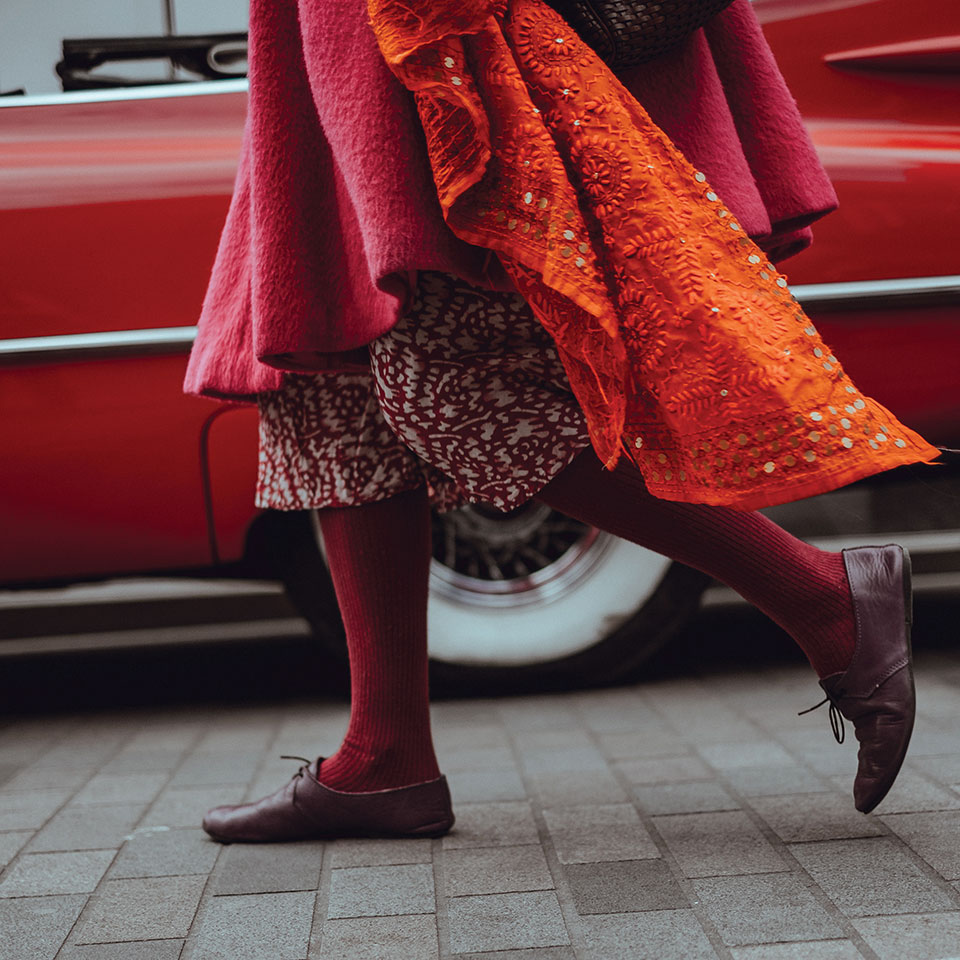
Johnson: If you could take a walk with one other artist, who would it be, and where would you walk?
Rooney: Ha. Funny you should ask because my number-one walking partner is my Poems While You Wait co-founder and Magritte co-editor and DePaul University colleague, Eric Plattner. He’s one of the two people to whom the book is dedicated, and he’s a veritable artist of walking itself. He also makes beautiful, limited-edition, self-released poetry collections.
He and I walk all over the city of Chicago from Pullman on the far, far South Side up to Rogers Park on the far, far North and everywhere in between. No matter how many times we walk through the city, every walk is different. If you’re curious, we wrote a short piece about one of our walks in the magazine Slag Glass City, which is run by our DePaul colleague Barrie Jean Borich, a fellow flâneuse.
I wish everyone could take more walks. I’d send them all over their own suburbs and cities and towns because walking is the optimal way to encounter one’s community and the people and shops and institutions in it.
Johnson: Is there someone you wish you could make take more walks? Where would you send them?
Rooney: Everyone. I wish everyone could take more walks. I’d send them all over their own suburbs and cities and towns because walking is the optimal way to encounter one’s community and the people and shops and institutions in it. Outside a few major cities, America is a deeply pedestrian-hostile and car-centric culture, and that is to the regrettable detriment of us all. When people move around their landscape exclusively in cars, never encountering strangers on foot, their bodies and their capacity for empathy atrophy. So—since this is a question about wishing—my fantasy would be to build gorgeous sidewalks (not walking paths isolated for a single use, but sidewalks right through the heart of things) in every place that lacks them, and then to reduce the stranglehold of capitalism so that people could work less and have more leisure and use some of that leisure time to stroll around. Last but not least, I’d confiscate their phones so they wouldn’t be tempted to just stroke their devices but could look up and out and into other people’s eyes.
Johnson: In addition to walking, civility is a high value for Lillian. Is that due to the copywriter she’s based on, Margaret Fishback, a concern of yours that you’ve shared with Lillian, or simply a character trait appropriate for her?
Rooney: Fishback valued civil behavior, too, and wrote a witty guide to manners called Safe Conduct: When to Behave and Why. It came out in 1938 and is sadly out of print, but the advice in it holds up because good manners are timeless.
Also, Margaret’s—and therefore Lillian’s—esteem for civility is a trait that I admire and strive to share. Courtesy and politeness are sometimes derided as fake or phony. (Sidebar on this point: I despise when people claim that they have to give Trump credit because “at least he’s honest,” as if the only way to be honest is to be blunt, hateful, rude, and crass; that’s not honesty, I’m afraid, that’s being an asshole and it’s disgusting and dangerous.) Or graciousness gets dismissed as formal or distant, but to me that’s a misunderstanding of the power of civility. True civility means to meet people in the way that you’d hope to be met—with generosity and goodwill and a belief in equality: that everyone you encounter has something to offer.
And in my experience, everyone does. You learn the wildest stuff just by talking to people and letting them reveal who they are. A couple of weeks back, Eric and I were riding the bus on the way home from a nine-mile walk, and we struck up a conversation with this woman sitting next to us, and it turned out that she was an author, too. She wrote an incredibly heartbreaking account of a famous unsolved murder here in Chicago (which Eric and I had never heard of until meeting her). Thanks to that encounter—politely asking her about what she was reading—we learned all about the Grimes Sisters, and so much more.
True civility means to meet people in the way that you’d hope to be met—with generosity and goodwill and a belief in equality: that everyone you encounter has something to offer.
Johnson: What are your top three reads for urban walkers?
Rooney: Oh man, only three? Okay: Frank O’Hara’s Lunch Poems, Virginia Woolf’s essay “Street Haunting,” and Ben Katchor’s comic strips/picture stories, Julius Knipl, Real Estate Photographer. I teach a class at DePaul called “Writer as Urban Walker,” and we read all of those authors and many more.
Johnson: In your introductory essay to René Magritte: Selected Writings, you write about his contemporary relevance, reminding us “that there are alternatives, there are mysteries” opposing deadening through “spectacle, kitsch, materialism, exhaustion and countless empty entanglements.” What alternatives have you discovered?
Rooney: Curiosity is the emotion I most like to feel—about places, about people, about the present, about the past, and on and on. Reading, talking to people (both friends and strangers), walking, photographing and looking at photographs, painting and looking at paintings are just a few alternatives I’ve found to stay curious and engaged—to become energized as opposed to exhausted, and to absorb oneself not in empty entanglements but full ones.
Johnson: Why does Magritte capture your attention?
Rooney: Magritte is what I’d call a writer’s painter; although he is best known for his works in visual media, his sensibility is essentially literary. His writing reveals a person in constant pursuit of the achievement of poetry in all arenas. In “A Poetic Art,” he writes: “The art of painting, as I see it, makes possible the realization of visible poetic images.” And his definition of poetry—as effective a definition as can be found anywhere—is that it must be surprising and enchanting. In the short essay “L’Empire des lumières”—jumping off from his image of the same title in which the landscape on the ground is nocturnal but the sky is daylit—he writes: “This evocation of day and night seems to me to have the power to surprise and enchant us. I call this power ‘poetry.’”
Also, he’s funny. I can’t take anyone who takes themselves too seriously. The blending of emotional registers always strikes me as more compelling than when someone is exclusively somber or exclusively comedic, and Magritte blends moods in his paintings and writings marvelously. His wit is ever-present, impressive, and infectious.
Johnson: What is your favorite line of his writing?
Rooney: Mysteries and detective stories—broadly defined as accounts in which someone is led by their curiosity to make a discovery—have always intrigued me. I try to see life through the eyes of a detective. So one of my favorite lines of Magritte’s occurs in his brief prose poem “Mystery Is Not . . .” in which he says: “Mystery is not one of the possibilities of reality. Mystery is what is absolutely necessary in order for reality to exist.”
Johnson: As a co-founding editor of Rose Metal Press, what do you see as the most exciting hybrid genre currently emerging?
Rooney: Choosing one is too hard, so I’m going to name two. My co-founder, Abby Beckel, and I are especially excited lately by the potential that arises in combining images and text. In the fall of 2018, for instance, we’re publishing Maria Romasco Moore’s debut book, Ghostographs, a flash-fiction photo album in which she uses vintage photos collected from flea markets in tandem with brief stories to illuminate coming-of-age in a small and mysterious town.
We’re also excited at the prospect of collaboration as a hybrid genre. We recently had an open reading period, and one of the manuscripts we selected is A Survival Guide for Life in the Ruins, an abecedarian set of flash nonfiction pieces co-written by the American author Nicole Walker and the Australian writer David Carlin, a funny-sad set of essays about the Anthropocene—all that we are losing and how to cope with that loss.
And in February 2018 we’re releasing a book that blends both image and text and collaboration called Monster Portraits, by brother-and-sister team Del and Sofia Samatar. Del’s drawings of the so-called “monsters” of the title mix with World Fantasy Award–winning author Sofia’s allusive, critical, and ecstatic meditations on the monstrous. Add to cart!
December 2017
Editorial Note: To enjoy Rooney's Lillian Boxfish Takes a Walk playlist, visit largeheartedboy.com.






